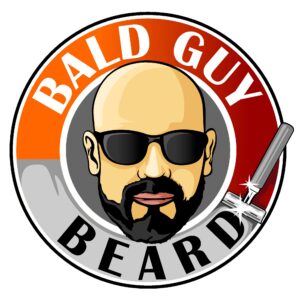Scalp folliculitis is a very common condition where the hair follicles become inflamed due largely to a fungal or bacterial infection. Symptoms include:
- Small groups of inflamed, red sores around the front hairline.
- White bumps that look like small zits also around the front hairline often within the red inflamed areas.
- Itchy, painful skin and possibly a burning feeling which makes you want to scratch the area in question.
- Pus-filled sores that typically break open and then develop a crust.
We already talked about shaving with acne and how it be a challenge especially if you’re prone to breakouts or are a young person who has just started dealing with it.
But scalp folloculitis is something different. While it might go away on its on, it can return and might be a chronic condition that you need to deal with medically.
How do you get rid of scalp folliculitis? Read on and let’s check out the options.
How Do You Get Rid Of Scalp Folliculitis – Options

While mild cases of scalp folliculitis often clear up on their own within 7-10 days, more serious cases might require medical treatment. A visit to a dermatologist is your best bet if your case is bad and doesn’t clear up in a few days by itself.
Topical product: Your doctor might prescribe a specialty shampoo, wash, lotion or other topical solution to help deal with mild cases of scalp folliculitis. You might also find that an anti-dandruff shampoo that contains an anti-fungal agent may help.
Antibiotics: An antibiotic cream, gel, or lotion may be used for cases where a topical shampoo doesn’t help. Antibiotics in pill form tend to be used for more serious cases.
Surgery: Generally considered a minor surgery, a doctor may suggest a procedure to deal with cases involving a large boil. This typically involves draining the sore and allowing it to heal.
Laser: Laser treatment can be used to deal with other serious cases. Laser treatment is also used for hair removal and thus can reduce or eliminate hair in the affected area, so consider this as a possible side effect.
Prevent Scalp Folliculitis From Returning
Watch what you wear: Avoid wearing tight clothing or other items that restrict the skin and cause friction ie. a hat or cap, beanie, helmet, etc.
Avoid or minimize shaving if possible: Try to avoid shaving or cutting the area in question until it has cleared up. If you shave your head, consider holding off until you’ve addressed the issue.
Adjust your shaving habits: Change razors frequently. Shave slowly and less often if possible. Use a sensitive skin shaving cream. Shave with the grain only.
Take better care of your skin: Exfoliate using a mild face wash. This will help to loosen ingrown hairs and keep pores open and clear. Consider using a pre-shave lotion and post-shave moisturizer to keep your skin healthy and from drying out. Avoid itching and scratching the area in question.
Conclusion
- Scalp folloculitis typically occurs on the front hairline area and manifests itself as red inflamed bumps or white zit-like bumps.
- It can often clear up on its own within 10 days in less serious cases.
- The condition can be exacerbated with shaving, wearing tight-fitting items and poor hygiene.
- A dermatologist might prescribe a topical lotion, cream, shampoo or gel. They can also prescribe a tablet antibiotic for more serious cases. Surgery or laser treatment is also an option for some cases.
- Keratosis pilaris is another skin condition you might face that needs to be addressed as it can negatively impact shaving.
- Do you suffer from acne keloidalis?
If you’ve had scalp folloculitis, how did you deal with it or did it go away on its own?


